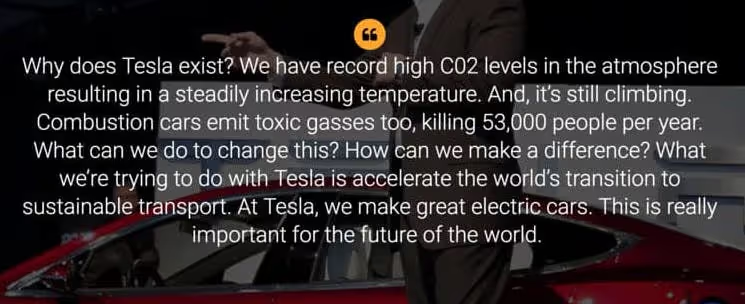Every startup founder has a Hollywood-style fantasy that they’ll wind up in an elevator with a rockstar investor. As the fantasy goes, over the course of that 30 second elevator ride they successfully pitch themselves millions of dollars of investment and set their startup on the fast path to billion-dollar success.
Is that specific scenario going to happen to you?
Probably not, but refining an “elevator pitch,” is still an essential exercise, because it will be the first introduction that most investors will have to your startup.
What is an elevator pitch?
An elevator pitch won’t get someone to invest in your company, but it’s going to whet their appetite and get you in the door. It’s thirty seconds long. That’s the usual “rule” given for elevator pitches. You’ve got 30 seconds to share an enormous amount of information about the company:
1) Who you are
2) What you do
3) How you do it
4) Who you do it for (i.e. the customer) and
5) Why now (the urgency of your idea)
Furthermore, you can’t squeeze hundreds of words into those 30 seconds by talking fast. Efficiency is the game here, and you need every single word in the pitch to leave an impression.
The other thing to remember about the elevator pitch is that you’re not going to use it exclusively when pitching for business. A good elevator pitch forms the basis of the “about us” section on your website, and it becomes the way that everyone in the organisation, from executive to intern, describes the business that they work for.
Basically, if a business were a movie, the elevator pitch would be the poster in the cinema.
How long should an elevator pitch be? Do I really only have 30 seconds?
Of course, no one’s going to stand there with a stopwatch and time how long your elevator pitch is, and an elevator pitch that runs to 31 seconds isn’t going to doom the startup. However, a lot of information can be delivered in a half minute. If you’re finding that your pitch is taking longer than that, then you should look for where the message is inefficient, and find a way to better—and more quickly—explain yourself.
As the saying often goes, however, once you know the rules, you also know how to break them. Tesla’s elevator pitch is longer than 30 seconds, and despite Elon Musk’s unfavourable position in the market of late, few would dispute his ability to pitch a business. There are times where you can take the listener on a short journey for a minute and leave them completely convinced in what you are doing:

It’s a rare business leader that can do this successfully, but the key takeaway here is that the “30-second rule” is only a best practice and recommendation. It’s much more important that the elevator pitch is reflective of your audience, the situation, and your startup’s value than it is sticking to any rule.
Why are elevator pitches important?
At its core, an elevator pitch is an attention-grabbing exercise. It’s the highest of high-level visions that convey an idea so compellingly that the listener—whoever it might be—suddenly becomes interested in your business.
When done well, an elevator pitch will do much more than catch the attention of investors, too. John Sculley, the vice president of PepsiCo, would never have thought about shifting his career to a technology company. Then Steve Jobs asked him “do you want to spend the rest of your life selling sugared water, or do you want a chance to change the world?” A few years later, having joined Apple as the CEO, Sculley was one of the highest-paid executives in America and Apple was flying high.
An elevator pitch is important because it sells the crux of your idea. Not just to investors, but to the right people that you need to join the organisation, your all-important first customers and business partners, and to people that are only hearing about you for the first time. The elevator pitch is your weapon at conferences and job fairs, where you’re competing to cut through the noise of dozens of founders, and it’s the LinkedIn bio that causes a person who has never heard of you before to reach out with an invitation to connect.
What’s important is that you understand that a core priority of the elevator pitch is that you can catch the attention of someone who wasn’t previously aware of you. In that way, the elevator pitch is different to the pitch deck.
The difference between an elevator pitch and a pitch deck
A pitch deck is what comes after the elevator pitch. It’s for when you’ve caught the attention of your target—whether that be an investor, an executive that you’re looking to woo to your business, or an aligned business that you’re looking to partner with. The pitch deck gets brought to the table when you need to explain the idea properly.
A pitch deck will be 10-20 slides long, which you’ll present over a 15 minute period. The elevator pitch will be the first slide (to remind the person you’re presenting to why you caught their attention in the first instance) but from there you’ll begin to qualify your idea with more detail and substance.
Both are equally important but have a role at different stages when pitching your business. To go back to our earlier movie example—the elevator pitch is the movie poster in the cinema. The pitch deck is the film synopsis that you read online once the poster has caught your interest and made you aware of the existence of the film. The poster catches your interest. The synopsis convinces you to buy the ticket.
How to create an elevator pitch investors can’t ignore
To re-iterate, the five basic pieces of information that will be contained in an elevator pitch are:
1) Who you are
2) What you do
3) How you do it
4) Who you do it for (i.e. the customer) and
5) Why now (the urgency of your idea)
And then, sitting on top of this, is the need to make it accessible to the listener. This means you need to assume that they’re not aware of your business, or anything about the sector that you’re in.
Here's a great example of this. Here’s a pitch that was proving unsuccessful for a startup:
“I work on nanotechnology to deliver medical therapies to targeted cells.”
It has all five of the elements of an elevator pitch in there. It covers:
1) Who you are (a medical science company)
2) What you do (medicine)
3) How you do it (nanotechnology innovation)
4) Who you do it for (people who need medicine)
5) Why now (it improves the delivery of medicine)
However, the company had lost sight of the need to make the pitch accessible. The only people that would continue to listen to that pitch are the ones who are already involved in nanotechnology-driven medical therapies… and that’s a pretty limiting restriction!
So the company went back and refined the pitch, ultimately coming up with this:
“We are using the manufacturing techniques of the computer industry to make better vaccines.”
It’s less specific but promises far more to the layperson, while still hitting the key requirements of an elevator pitch. Using this pitch, Joe DeSimone was subsequently able to convince the Bill Gates Foundation to invest in Liquidia.
Building the elevator pitch starts with you asking four questions of your business:
1) Who is the target market?
2) What is the problem that they face?
3) How does your business address that problem?
4) How will your customers know that you’ve helped?
And from there you need to encapsulate the answer within three to four sentences. It might sound difficult, but because the elevator pitch needs to be so punchy, there are actually templates that you can use to establish the baseline of the pitch.
Here is the basic formula for an elevator pitch:
“You know how (insert audience) deal with (insert problem)? I (insert solution). This helps to (insert benefit) so they can (insert goal)”
Here is an example of how this formula might work:
Has this ever happened to you? You’re rushing to get the kids out the door in the morning so you can get them to school on time and not be late for an important meeting (The audience)
And then you realize that you can’t find your car keys. This happens all the time to me. In fact, did you know that the average suburban professional misplaces their keys more than five times per month? (The problem)
That’s more than 600 million times per year! Using bluetooth technology, I’ve created a low cost key fob (The “I solution”) that helps people find their keys and other lost items in record time (The benefit), making it easier to get out the door on busy mornings (The goal).
We’ve got a working prototype and now we’re looking to raise funds to go into large-scale production. We’ve got some new team members on board with extensive manufacturing experience and supply chain expertise, so we’re hoping to get to market in the next six months.
Of course, if every entrepreneur was copy/pasting that exact elevator pitch as their own, then no one would be successful, because every elevator pitch would sound the same to the investors. Once you’ve got this “template” elevator pitch for your business, the next, and final, step is to make sure you’ve got different versions of it readily available.
PRO TIP
When tackling this exercise, it’s important to be sure about your numbers. Inflating or inventing figures to artificially boost the relevance of your solution will only erode your credibility. Fact-check your claims and speak with confidence.
Why you need multiple versions of your elevator pitch
The Liquidia example that we mentioned above is a good example of a “logline” or “one sentence pitch.” This is a form of elevator pitch that is currently popular in our soundbite-driven society. That’s one example of an “alternative” elevator pitch that you should prepare to deploy where it’s more strategic than using the “base” template version.
The emotional benefit version
Another elevator pitch that you should prepare is one that focuses on explaining the emotional benefit of your company’s product and services. As much as we try to make rational decisions, ultimately people are emotional. If you understand the emotional undertones to a problem, then focusing on that, rather than the goal-based objectives, can make for a powerful elevator pitch. This approach is going to be particularly effective in onboarding the initial wave of customers and informing the marketing strategy. This is what Elon Musk is basically doing in our earlier example.
The success story version
Once your business has its first customers, you’ll want to develop another version of the elevator pitch: the success story. Here, rather than say that your business will help with a problem, you’ll show that it has. Once people have a sense of the real-world value and applications of your solution, they will be more interested in your business if they are in a similar boat to the customers that you’re already helping.
The pressing call to action version
Having a more active call to action elevator pitch is useful too. Often elevator pitches ask the audience to think about the problem (and your company’s relevance to that problem), and then “get back to you”. They’ve got your card and when they want to see the pitch deck, they’ll give you a call. There will be times, however, where the opportunity will be to get an investor, customer, or future employee to act now, and in those cases you’ll want an elevator pitch that has an element of urgency to it.
The version where you reference competitors
Yet another common (and successful) elevator pitch is for startups that are entering a market with a well-known competitor. Having a pitch that contextualises your service against something familiar can be enormously effective when you’re targeting a niche market but need to make the growth potential clear. Nextdoor’s pitch, for example, might have been (and almost certainly was) “we’re like Facebook, but for local communities”.
Crafting alternative approaches to the elevator pitch is critical because the elevator pitch is contextual. What will work will depend on the situation you’re in, and the person that you’re talking to. Being in an actual elevator speaking to a rockstar investor that you were lucky to bump into requires a different pitch to speaking to someone that saw you present at a conference and was impressed by what they heard. Having a broad spectrum of pitches pre-planned will help you adjust your pitch on the fly based on the situation (and opportunity) in front of you.
Making sure your elevator pitch sticks
There is an excellent article on Inc., written by a venture capitalist, Sean Wise. In it he highlights how he has heard over 20,000 elevator pitches. It goes without saying that after hearing that number of pitches you understand you know what makes one stand out.
From that experience (and it’s worth noting that most VCs are in a similar position) Wise shares his four criteria that determine a great pitch:
Irrefutable: Your pitch is a statement about your company. You want to state who you are and what you do, to the point that no one can deny your claims.
Succinct: The pitch needs to be quick and easy, something you could say in one or two breaths.
Understandable: Everyone should be able to hear your pitch and get a proper snapshot of your company. No tech talk!
Attractive: You want to show the reward is worth the risk.
Within that you want your startup’s character and personality to come out so, as much as there are templates and best practices, be willing to experiment and break the rules when you’ve got a particularly compelling reason to do so. As long as you’re able to effectively, efficiently, and compellingly describe your company in 30 seconds or less, there may well be a Hollywood success story in there for you.
It might happen at a conference, a networking event, a restaurant or the actual elevator, but with the right pitch preparation, that serendipitous meeting with an investor will be the most important 30 seconds of your entrepreneurial life.












